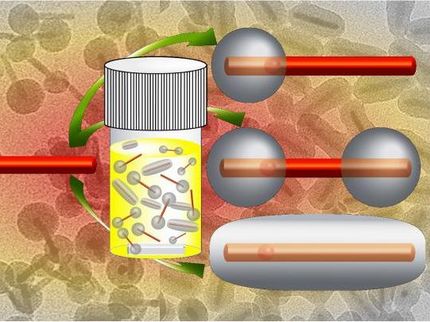Made from solar concentrate
Solar cell absorbs high-energy light at 30-fold higher concentration than conventional cells
Advertisement
By combining designer quantum dot light-emitters with spectrally matched photonic mirrors, a team of scientists with the Lawrence Berkeley National Laboratory and the University of Illinois created solar cells that collect blue photons with the highest luminescent concentration factor ever recorded.
"We've achieved a luminescent concentration ratio greater than 30 with an optical efficiency of 82-percent for blue photons," says Berkeley Lab director Paul Alivisatos. "To the best of our knowledge, this is the highest luminescent concentration factor in literature to date."
Low-cost alternatives to today's photovoltaic solar panels are needed for the immense advantages of solar power to be fully realized. One promising alternative has been luminescent solar concentrators (LSCs).
Unlike conventional solar cells that directly absorb sunlight and convert it into electricity, an LSC absorbs the light on a plate embedded with highly efficient light-emitters called "lumophores" that then re-emit the absorbed light at longer wavelengths, a process known as the Stokes shift. This re-emitted light is directed to a micro-solar cell for conversion to electricity. Because the plate is much larger than the micro-solar cell, the solar energy hitting the cell is highly concentrated.
With a sufficient concentration factor, only small amounts of expensive III-V photovoltaic materials are needed to collect light from an inexpensive luminescent waveguide. However, the concentration factor and collection efficiency of the molecular dyes that up until now have been used as lumophores are limited by parasitic losses, including non-unity quantum yields of the lumophores, imperfect light trapping within the waveguide, and reabsorption and scattering of propagating photons.
"We replaced the molecular dyes in previous LSC systems with core/shell nanoparticles composed of cadmium selenide (CdSe) cores and cadmium sulfide (CdS) shells that increase the Stokes shift while reducing photon re-absorption," says Bronstein one of three lead authors.
"The CdSe/CdS nanoparticles enabled us to decouple absorption from emission energy and volume, which in turn allowed us to balance absorption and scattering to obtain the optimum nanoparticle," he says. "Our use of photonic mirrors that are carefully matched to the narrow bandwidth of our quantum dot lumophores allowed us to achieve waveguide efficiency exceeding the limit imposed by total internal reflection."





























































